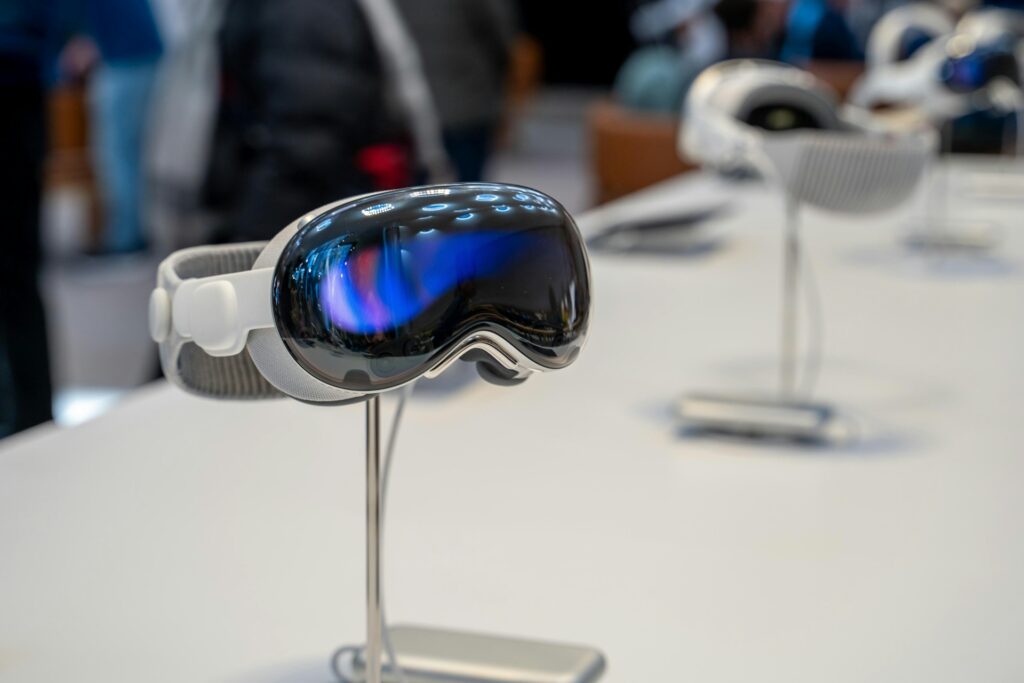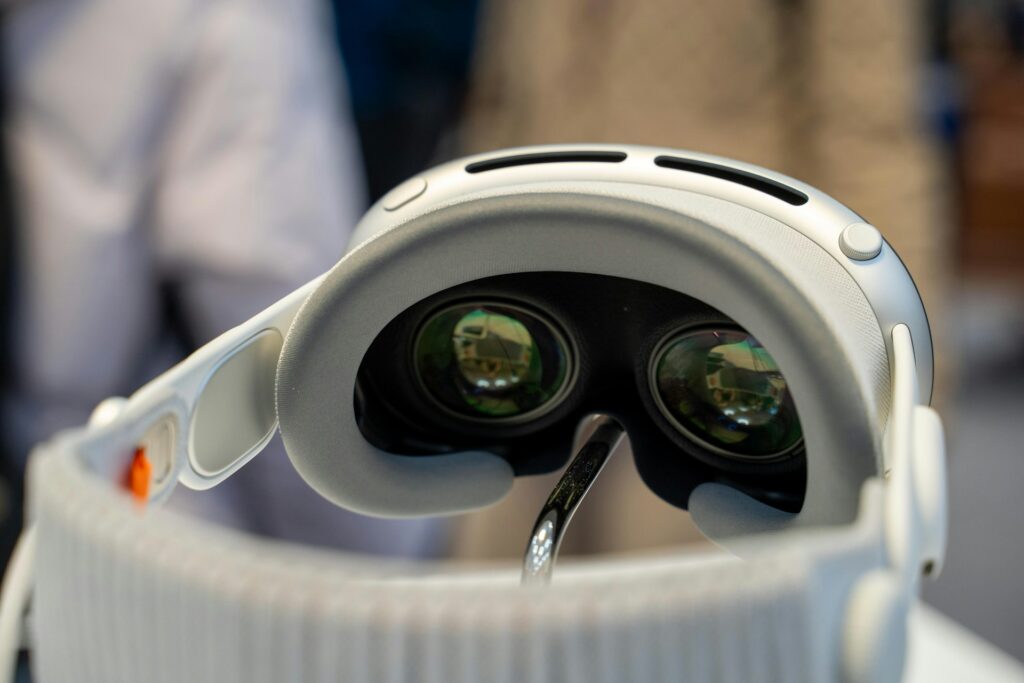

When Apple unveiled its Vision Pro headset in early 2024, it sent waves of excitement through various sectors, including education. The promise of a “spatial computer” that seamlessly blends digital media with the real world seemed like a game-changer for immersive learning. However, after months of thorough analysis and practical testing, it’s become clear that this device, despite its impressive technology, falls short when it comes to VR education in schools.

The Apple Vision Pro, weighing just over 600g, offers a unique mixed reality experience. Users can switch between fully immersive virtual reality and a mixed reality mode where digital objects overlay the real world. Unlike traditional VR headsets, the Vision Pro relies primarily on eye-tracking technology for control, eschewing handheld controllers.
While these features sound promising, they come with a hefty price tag of $3,499 – a cost that’s difficult to justify for most educational institutions.

Despite its cutting-edge technology, several factors make the Vision Pro unsuitable for educational settings:
While the Vision Pro may not be the answer for schools, other VR devices have proven their worth in educational settings. Headsets like the Meta Quest 2, Meta Quest 3, Pico Neo 3, and Pico 4 offer a more suitable solution for several reasons:
Virtual Reality is revolutionizing how students engage with complex concepts across various subjects. Here’s how VR is enhancing education:
VR allows students to conduct virtual experiments that might be too dangerous, expensive, or impractical in a real-world setting. Imagine dissecting a virtual frog or exploring the inside of a volcano – all from the safety of the classroom.
History lessons come alive as students virtually visit ancient civilizations or witness pivotal historical events. This immersive experience fosters a deeper understanding and appreciation of history.
astronomy lessons, students can voyage through the solar system, walk on the surface of Mars, or witness the birth of stars. These experiences make abstract concepts tangible and unforgettable.
At XReady Lab, we’re at the forefront of developing VR education software that aligns with curriculum standards while captivating students’ imaginations. Our suite of VR education apps focuses on creating engaging, interactive experiences for STEM subjects.
At XReady Lab, we’re revolutionizing STEM education with our cutting-edge VR simulations. Our content is specifically designed for popular and affordable VR devices like Meta Quest 2, Meta Quest 3, Pico Neo 3, and Pico 4, making immersive learning accessible to schools everywhere.
Let’s explore two of our standout simulations that are transforming science education:
Our VR biology simulation on cell division mitosis offers an unparalleled learning experience:
This simulation brings cellular biology to life, offering an engaging and informative experience that textbooks simply can’t match.
Step into the shoes of an astronaut and explore the wonders of our solar system:
This simulation turns abstract astronomical concepts into tangible, unforgettable experiences, igniting students’ passion for space science.
Our simulations are optimized for the most popular educational VR headsets:
By focusing on these accessible devices, we ensure that schools can implement VR education without breaking the bank.
We invite educators to explore the potential of VR in their classrooms. Visit our demo request page to access our free VR education apps and witness firsthand how they can transform your science lessons.
Don’t just teach science – let your students experience it. With XReady Lab’s VR simulations, you’re not just preparing students for exams; you’re inspiring the next generation of scientists, astronauts, and innovators.
While the Apple Vision Pro showcases impressive technology, it’s not yet the right fit for school VR education. Instead, devices like Meta Quest and Pico, combined with specialized educational content from companies like XReady Lab, offer a more practical, affordable, and content-rich solution for integrating VR into the classroom.
As we continue to push the boundaries of educational technology, it’s crucial to focus on solutions that not only dazzle with innovation but also provide tangible, accessible benefits to students and educators alike. By choosing the right VR tools, we can create a learning environment that’s not just about the future – it’s about bringing that future into today’s classrooms.
Ready to revolutionize your teaching with VR? Contact us today to learn more about how XReady Lab can enhance your STEM curriculum with cutting-edge VR technology.
Frequently Asked
We prodive VR biology, VR physics, and VR chemistry simulations. Please, check our catalog.
Please, fill the form to get demo labs for free.
Please contact our customer support service at support@xreadylab.com or book a call with the team to find out the conditions and book the VR class set up at your school.
Subscription to XReady Lab interactive VR labs. If you are a school, then you are also given access to the VR classroom system. VR class system helps you easily launch VR lessons for a large number of students, follow the experience of each student, as well as customise the content without developers.
We adhere to the world’s generally accepted recommendations and research. Our products are suitable for children from 12 years old.